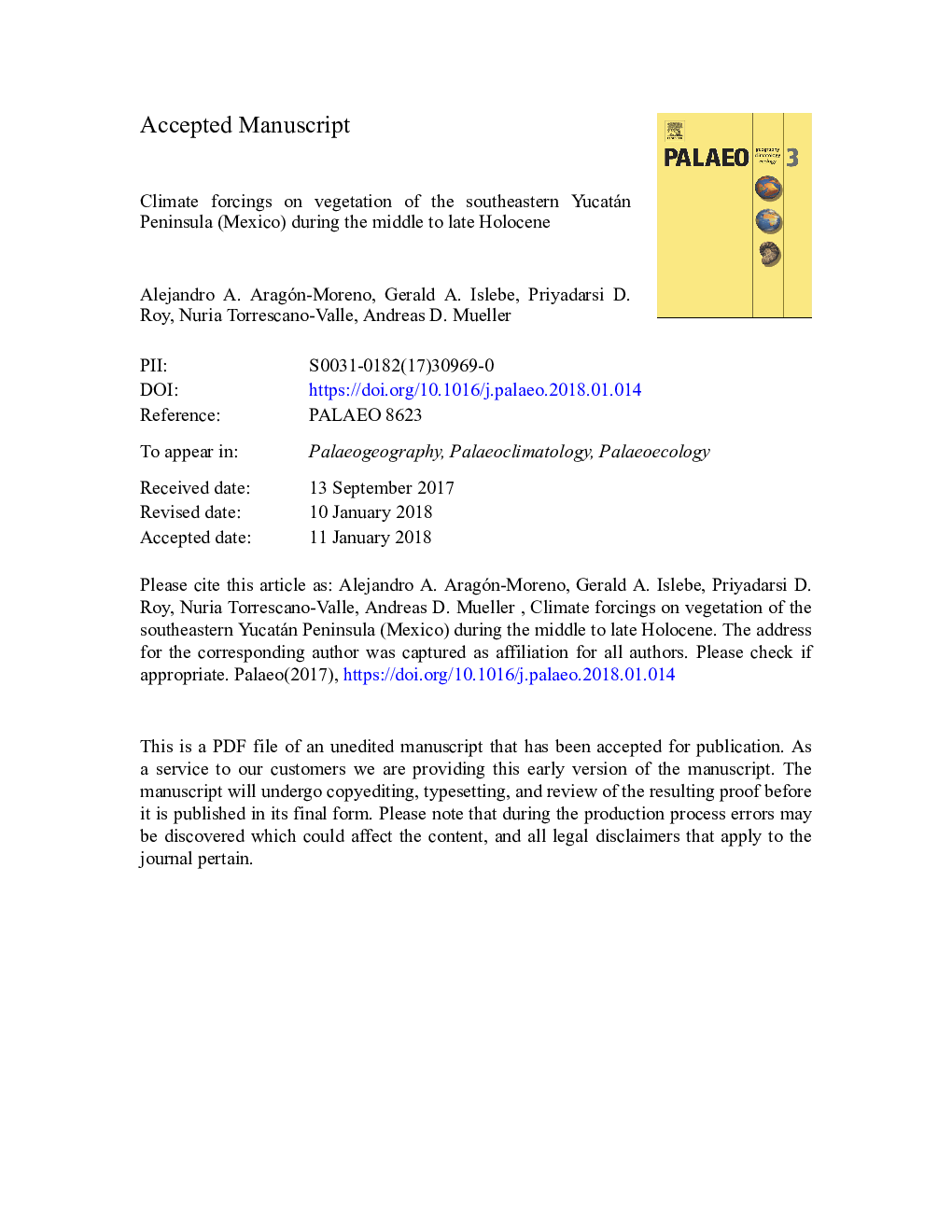| Article ID | Journal | Published Year | Pages | File Type |
|---|---|---|---|---|
| 8868335 | Palaeogeography, Palaeoclimatology, Palaeoecology | 2018 | 43 Pages |
Abstract
Climate and vegetation history from the Yucatán Peninsula, southeastern Mexico, are inferred from a mangrove sediment core deposited between the middle and late Holocene (~5600-1700â¯calâ¯yrâ¯B.P.) in the Rio Hondo Delta. Fossil pollen and concentrations of Ca and Fe and Ca/Fe ratio in sediments are used to record changes in vegetation and climate. Palaeoecological and palaeoclimatic interpretations obtained from pollen abundances and associations and Fe/Ca ratio coincide with dynamics of major global forcings of climate change like ITCZ, ENSO and global cooling. Mesic conditions enabled tropical forest expansion during the middle Holocene (~5600-3650â¯calâ¯yrâ¯B.P.), although there were periodic dry episodes at ~5200â¯calâ¯yrâ¯B.P. and at ~4300â¯calâ¯yrâ¯B.P. that caused disturbance and enabled herbaceous vegetation to expand. Changes in sedimentation and a gradual change from semi-evergreen to dry tropical forest occurred at ~3650â¯calâ¯yrâ¯B.P., with increasing ENSO activity and southward migration of the ITCZ during transition of the middle to late Holocene. The driest period and lowest forest cover occurred between ~2600 and 2000â¯calâ¯yrâ¯B.P. Data show that over the last two millennia, influence of the ENSO on southeastern Mexico is stronger compared to other proxy-records of climate variability from the Caribbean region.
Related Topics
Physical Sciences and Engineering
Earth and Planetary Sciences
Earth-Surface Processes
Authors
Alejandro A. Aragón-Moreno, Gerald A. Islebe, Priyadarsi D. Roy, Nuria Torrescano-Valle, Andreas D. Mueller,
